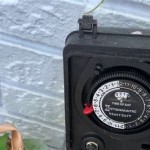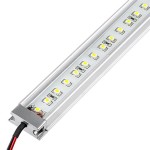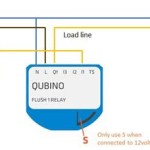Outdoor Light Post Photo Sensors: Automating Illumination with Ambient Light Detection
Outdoor light post photo sensors, also known as photocells or light sensors, are electronic components designed to automatically control the illumination of outdoor lighting fixtures based on the ambient light level. These devices play a crucial role in energy conservation, enhanced security, and improved convenience by ensuring that outdoor lights are only active when they are needed, specifically during dusk, darkness, and dawn.
The primary function of a photo sensor is to detect the amount of ambient light present in its environment. This information is then used to trigger a switch that controls the flow of electricity to the light fixture. When the light level falls below a pre-determined threshold (e.g., at dusk), the sensor activates the light. Conversely, when the light level rises above the threshold (e.g., at dawn), the sensor deactivates the light. This automated system eliminates the need for manual switching, saving time and effort, and reducing the possibility of lights being left on unnecessarily.
The widespread adoption of outdoor light post photo sensors stems from their numerous benefits. These include energy efficiency, cost savings, extended lamp life, increased security, and enhanced convenience. In an era where environmental awareness and energy conservation are paramount, the integration of these sensors into outdoor lighting systems is becoming increasingly vital.
Understanding the Mechanics of Photo Sensors
Photo sensors predominantly operate on one of two fundamental principles: photoresistors and photodiodes/phototransistors. Understanding these mechanisms is crucial to appreciate their functionality and performance characteristics.
Photoresistors (Light-Dependent Resistors or LDRs): A photoresistor is a passive component whose resistance changes based on the amount of light incident upon it. In the absence of light, a photoresistor exhibits a high resistance, typically in the megaohm range. However, when exposed to light, the resistance decreases proportionally to the light intensity. This change in resistance is used to control a switching circuit. Typically, a photoresistor is connected in a voltage divider circuit. As the resistance of the photoresistor changes with light levels, the voltage at the node of the divider also changes. This voltage is then fed to a comparator circuit, which triggers the lighting circuit when the voltage falls below a predetermined threshold.
Photodiodes and Phototransistors: These are semiconductor devices that operate based on the photoelectric effect. A photodiode, when exposed to light, generates a small current proportional to the light intensity. A phototransistor operates similarly but amplifies the current generated by the incident light, making it more sensitive. These devices are usually connected to an amplifier circuit that increases the current signal to a level sufficient to trigger a switching circuit that controls the flow of electricity to the light fixture. Their faster response time and higher sensitivity often make them preferable for applications requiring precise light level detection.
Both types of sensors require careful calibration to ensure accurate triggering. This calibration involves setting the appropriate voltage threshold for the comparator circuit (in the case of photoresistors) or adjusting the amplification factor (in the case of photodiodes/phototransistors) to match the specific ambient light conditions of the installation location. Factors such as the presence of nearby artificial light sources, the orientation of the sensor, and the local climate can all influence the optimal calibration settings.
Key Considerations When Choosing a Photo Sensor
Selecting the appropriate photo sensor for an outdoor light post application requires careful consideration of several factors. These factors directly impact the efficiency, reliability, and longevity of the lighting system.
Light Sensitivity and Response Time: The light sensitivity of a photo sensor refers to its ability to detect faint changes in ambient light levels. A highly sensitive sensor will trigger at lower light levels, ensuring that the lights activate promptly at dusk and deactivate reliably at dawn. The response time, on the other hand, refers to the speed at which the sensor reacts to changes in light intensity. A faster response time prevents flickering or erratic behavior of the lights, especially in fluctuating light conditions (e.g., during cloudy days or when shadows are cast by trees).
Environmental Durability: Outdoor light posts are exposed to a wide range of environmental conditions, including rain, snow, extreme temperatures, and ultraviolet (UV) radiation. The photo sensor must be designed to withstand these conditions without degradation in performance or physical damage. Look for sensors that are housed in weatherproof enclosures made of UV-resistant materials. Ingress Protection (IP) ratings, such as IP65 or IP67, indicate the sensor's level of protection against dust and water ingress. Furthermore, consider the operating temperature range of the sensor to ensure it is compatible with the local climate.
Power Consumption: While photo sensors themselves typically consume a small amount of power, it is still an important factor to consider, especially in off-grid or solar-powered lighting systems. Opt for sensors with low power consumption to minimize the overall energy demand of the system. In some cases, advanced sensors incorporate power-saving modes that further reduce energy consumption when the light is actively illuminating the area.
Adjustability and Calibration: The ability to adjust the sensitivity and calibration of the photo sensor is crucial for optimizing its performance in different environments. Adjustable sensors allow users to fine-tune the triggering threshold to account for variations in local lighting conditions and personal preferences. This adjustability can be achieved through physical potentiometers or digital interfaces. Accurate calibration ensures that the lights turn on and off at the desired light levels, minimizing wasted energy and unnecessary illumination.
Mounting and Compatibility: Ensure that the photo sensor is compatible with the light post's existing wiring and mounting configuration. Consider the physical dimensions of the sensor and the available space within the light fixture. Some sensors come with universal mounting brackets that can be adapted to a variety of light post designs. Also, verify that the voltage and current ratings of the sensor match the specifications of the lighting system. Using an incompatible sensor can lead to malfunction, damage, or even safety hazards.
Installation and Maintenance of Photo Sensors
Proper installation and regular maintenance are crucial for ensuring the reliable and long-lasting performance of outdoor light post photo sensors. Following best practices during installation and implementing a simple maintenance schedule can significantly extend the lifespan of the sensor and the overall efficiency of the lighting system.
Installation Best Practices: The location of the photo sensor is paramount for accurate light detection. Avoid placing the sensor in areas where it might be directly illuminated by other light sources, such as streetlights or building lights. These artificial light sources can interfere with the sensor's ability to accurately detect ambient light levels, causing the lights to turn off prematurely or remain on unnecessarily. A shaded or shielded location is generally preferable. Ensure that the sensor is securely mounted and protected from physical damage. Use appropriate wiring methods and connectors to prevent water ingress and corrosion. Always follow the manufacturer's instructions for installation and wiring.
Calibration and Testing: After installation, carefully calibrate the photo sensor to ensure that the lights turn on and off at the desired light levels. This calibration process may involve adjusting a potentiometer or using a digital interface to set the triggering threshold. Test the sensor's functionality by simulating day and night conditions. Cover the sensor with a dark cloth to simulate darkness and verify that the lights turn on. Then, remove the cloth and expose the sensor to ambient light to verify that the lights turn off. Repeat this process several times to ensure consistent and reliable operation.
Regular Maintenance: Periodically inspect the photo sensor for any signs of damage, such as cracks, corrosion, or discoloration. Clean the sensor's lens or window to remove any dirt, dust, or debris that may be obstructing its ability to detect light accurately. Use a soft, damp cloth to clean the sensor; avoid using harsh chemicals or abrasive cleaners, as these can damage the sensor's surface. Check the wiring connections to ensure they are secure and free from corrosion. Replace any damaged or worn wiring immediately. If the sensor malfunctions or exhibits erratic behavior, replace it with a new sensor of the same type and specifications. Keep a record of all maintenance activities, including dates, observations, and repairs.
By adhering to these installation and maintenance guidelines, users can maximize the performance and lifespan of their outdoor light post photo sensors, ensuring efficient and reliable automated lighting control for years to come.

Edishine Outdoor Post Light Dusk To Dawn Photocell Sensor With Pier Mount Base Die Casting Aluminum Lamp Glass Shade Weatherproof E26 Com

Edishine Outdoor Post Light Dusk To Dawn Photocell Sensor With Pier Mount Base Die Casting Aluminum Lamp Glass Shade Weatherproof E26 Com

Solus Photocell Light Sensor Switch For Hardwire Outdoor Lamp Posts With Ezee Change Plug Dusk To Dawn Control

Hardwire Post Eye Light Control With Photocell Automatic Sensor Switch Ledwholers

Edishine Outdoor Post Light Dusk To Dawn Photocell Sensor With Pier Mount Base Die Casting Aluminum Lamp Glass Shade Weatherproof E26 Com

Hardwire Post Eye Light Control With Photocell Automatic Sensor Switch Ledwholers

Solus 6 Ft Broe Outdoor Lamp Post With Dusk To Dawn Photo Sensor Fits 3 In Top Fixtures Sm6 320ncastv Bz The Home Depot

Emliviar Farmhouse Outdoor Post Light With Photocell Sensor 14 5 Inch

Emliviar Farmhouse Outdoor Post Light With Photocell Sensor 14 5 Inch

Dusk To Dawn Motion Sensor Outdoor Post Lights Exterior Lamp Light Fixture







